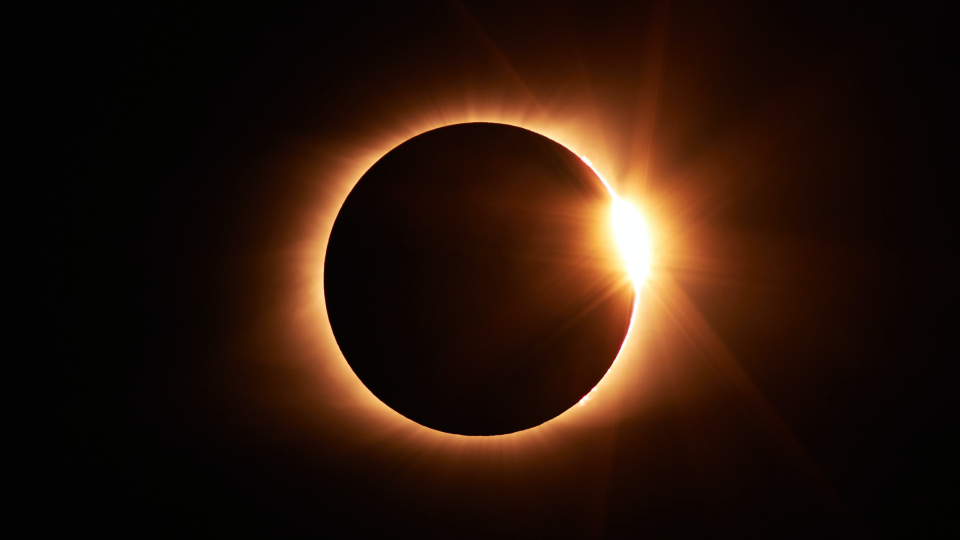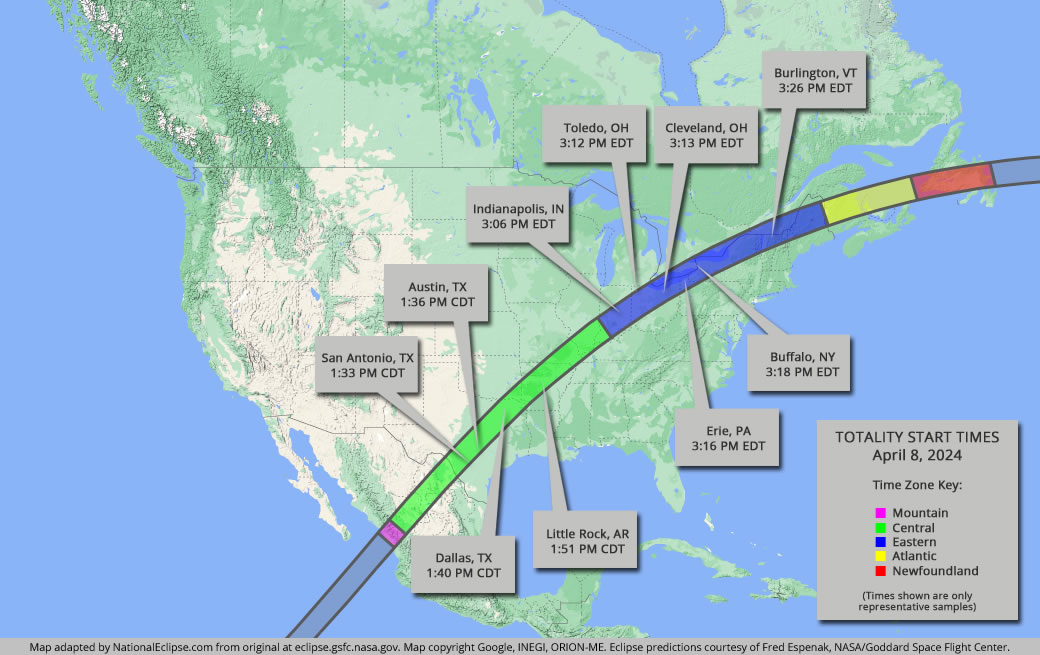The upcoming solar eclipse over a swath of the central and Northeastern US may bring unique challenges to business aircraft operators flying in those areas.

On April 8th, a rare total solar eclipse will pass over 14 US states and across two time zones. The eclipse will be seen over San Antonio, TX, at approximately 1:33 p.m. CDT; Austin, TX, just three minutes later; and over the Dallas/Fort Worth metroplex at 1:40 p.m. CDT.
The eclipse also will be seen over Indianapolis, IN, at 3:06 pm EDT before passing over Toledo and Cleveland, OH; Erie, PA; Buffalo, NY; and Burlington, VT, then crossing Newfoundland and Labrador and into the North Atlantic.
April 8th Solar Eclipse Path
While the eclipse will pass over the continental US in less than one hour and will only be visible for about three minutes in any one location, NBAA Air Traffic Services (ATS) cautions operators to be prepared for arrival, routing and departure delays along the eclipse path.
“More than 450 public-use airports lie within 50 nautical miles on either side of the eclipse track,” said Mike Schwab, NBAA ATS specialist. “Weather permitting, it’s possible those airports will see at least some increase in traffic, and some could experience substantial increases.
“With numerous general aviation ‘fly the eclipse’ events planned across the eclipse path, we also expect much heavier-than-usual VFR traffic at lower altitudes,” he added. “That may impact availability of flight following and other air traffic control services. Ground operations and parking space may also be affected.”
Additionally, operators should be prepared for holds and possible reroutes if crossing the path of the eclipse, with possible traffic management initiatives, and expect departure clearance times at major airports. The FAA also cautioned operators of possible special security provisions and TFRs in some areas.
Schwab encouraged operators to be diligent in their preparations for flying during the eclipse, including a thorough review of NOTAMs and consulting with their flight planning providers, and NBAA ATS, before traveling April 8 near the eclipse path.
“The good news from an operational perspective is that this won’t last long at all,” he said. “Even though the eclipse’s impact on business aviation operators should be fairly minimal, we should all be prepared for the unexpected.”


